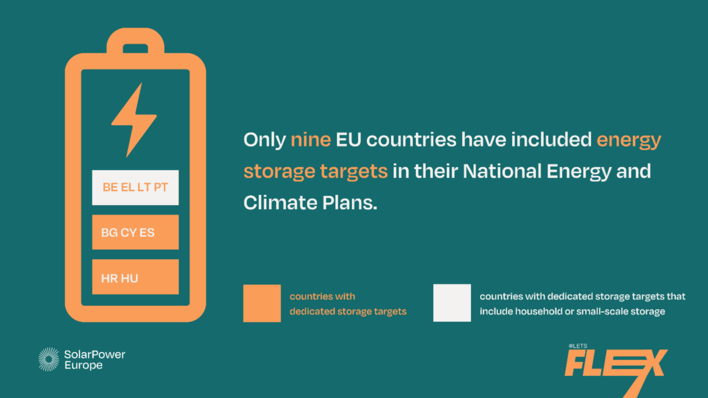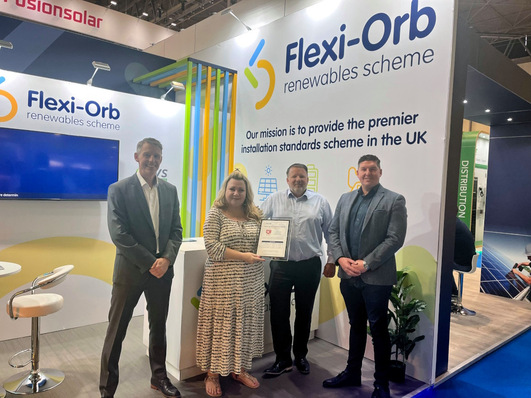How did E3/DC do this year?
2015 was the first normal year of operation for E3/DC. We sold 1,500 of our home-power-stations. Compared to the previous year we were able to double our turnover, and have now achieved 15 million euros – almost breaking even.
What is your target clientele?
We are clearly reaching the local installation contractors with their own sales channels, who are actively acquiring individual customers. We deliver directly to them. We put all our efforts into assuring quality and peace of mind for each customer, and we give the best warranties of any producer. We have no margin to work with, which is why we sell just seven or eight percent above retail.
What kind of turnover are you expecting for 2016?
We are budgeting conservatively, expecting our sales to only triple by 2020. Until 2018 we want to have a market share of between 12 and 15 percent. To answer your question: In 2016 we hope to sell between 2,100 and 2,500 units. In 2017 it could be 3,300 to 3,600, and more than 4,000 in 2018. Additionally, E3/DC will offer a commercial solution as well as upgrades, which are not included in these figures.
What storage capacity have you sold most in 2015?
There was a clear trend towards larger capacities, i.e. more than one kilowatt hour storage capacity per 1,000 kilowatt hours of annual consumed electricity. Our storage unit is proving popular and is being much better understood. We are noticing an increasing demand for commercial storage or units for apartment buildings, especially in combination with cogeneration units and thermal renovation.
What was the average size of the associated PV installations?
Between seven and 15 kilowatts. Customers consuming a lot of power, who also wanted our three-phase unit, preferred to install our home-power-station. Of course, E3/DC’s substitute power supply is also an important factor. We have to earn our money, you cannot by market shares. So we have to be convincing.
How will battery prices develop?
They will of course fall. To 250 euros per kilowatt hour by 2018, with a purchase price for battery systems of currently 350 euros per kilowatt hour. A number of producers will introduce more and more risky configurations of devices, just to keep up with the competitor’s prices. For us, that cannot be the way to go. We want to sell our products at the highest possible price, which is why we have added all kinds of features to our home-power-station. The latest example is the emergency power capability or SG Ready as standard or significantly more functionality in the area of automation and the integration of EVs.
So, more of a cautious lowering of prices?
Effectively, prices will not fall in 2016, because large producers like Samsung have realised that storage is a loss-making business. Take a look at the wholesale price for Tesla’s Powerwall, which at seven kilowatt hours is now more than 4,500 euros. When it was announced on 1 May, 2015, they were talking about 3,500 US dollars for ten kilowatt hours. Also, individual customers are not able to by the Powerwall and the wholesale dealer seller signs up to ‘authorised reselling’. As soon as one has to actually do what one announced, everything turns out differently.
Seriously: Where do you see prices in 2016 and the following year?
If market volume doubles, the price will fall by 10 to 15 percent, which can be achieved through economies of scale alone. In 2018, the new batteries for EVs will be introduced, with a capacity twice that of today’s batteries. That is like half the costs.
What strategy are you pursuing?
We want to sell at the most stable prices possible, but give our customers better functionality and performance. Among others, that depends on the efficiency of the unit, throughout its entire operation. People are told much that is not true about what a great storage unit they are about to buy. If you look at the units in detail, it is not rare for there to be massive hidden costs per kilowatt hour. Also, efficiency varies widely. According to our own measurements, AC systems perform much worse than CD systems. Further, there are systems which are installed in such a way that the overall consumption goes up, because the unit does not compensate for the customer’s self-consumption.
Such as?
We tested four types of system: single-phase vs three-phase, DC vs AC, low-voltage systems vs high-voltage batteries etc. To that end we created a rating system to make a comparison possible. Often the efficiency is only given at maximum load. But that is only reached when the solar panels are charging the storage unit at full power at noon. The discharge current in the evening is usually much weaker, but it is primarily the electricity in the evenings or at night that matter to the customers. AC systems usually have to discharge through the grid, and that alone causes a loss of ten percent. At partial load, there can be a difference between systems of up to 40 percent.
And in DC systems?
With some systems with peak load at noon and slow discharge in the evening, losses can accumulate to a third. Decent lithium systems might reach 75 to 80 percent efficiency. Lead acid systems are at less than 50 percent, sometimes significantly less than that. Fact is: Poor efficiency drives up the costs per kilowatt hour. Even very expensive units such as Tesla’s Powerwall turn out to be quite costly per kilowatt hour. It is the efficiency at weak load that separates the wheat from the chaff.
So one should indicate the costs per kilowatt hour?
You have to tell people the truth, especially if you are about to take thousands of euros off them. Indicating the number of cycles is a deception to the consumer, because he at home will never get anywhere near more than 3,000 to 4,000 cycles before the battery has reached the end of its lifespan as far as time is concerned. The customer ends up buying a battery that promises a certain number of kilowatt hours, but cannot deliver on that promise. What good does the price information do him, if he has no idea how much power he will be able to collect and discharge? The market is far from ready for guaranties of more than ten years of lifespan. The same is true for cars, where the warranty covers eight years.
Where are the technical developments in storage heading?
Four years from now, converter capacities will have increased four-fold, at half the cost for the converter. Also, storage units will have greater battery capacities. But most of all I see that EVs will dominate the market. Mercedes heavily advertises it and Tesla is a major force to ensure that the automotive industry will never again drop the subject of electro mobility. I wish Tesla every success. And it will be significantly more than the domestic storage units, because people are more interested in cars. And even though the batteries in EVs are big and expensive, the economic gain is much greater than in domestic storage.
Which local markets might gain in importance?
So far, we mostly do business in Germany and Austria, and also in Switzerland. Portugal is also very interested. Furthermore, we have projects in the Caribbean and also in Poland. We have decided not to invest in the US, because countries with net metering laws offer no opportunities for self-sufficient power supplies. Local markets that might will gain in importance in Germany are prefab houses with built-in storage units and infrared heating, and small businesses, particularly existing installations from 2020 onwards. From 2020, electric cars, especially the premium segment, will be the major driver for PV installations in private homes.
The Interview was conducted by Heiko Schwarzburger. (IR)







